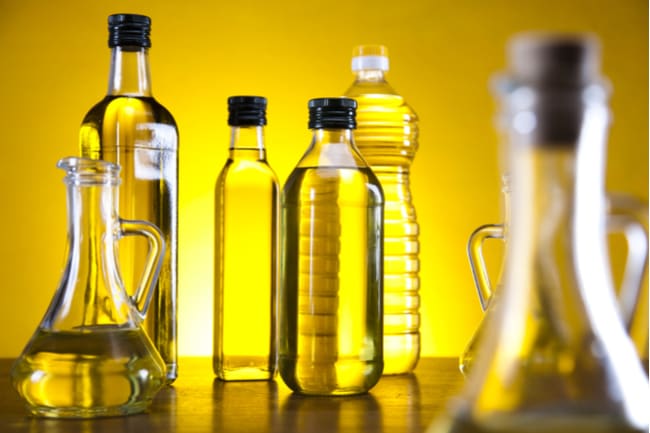The 5 Best Cooking Oils — And Why We Love Them

Put that old canola oil away — these days, there are so many other cooking oils you can use to whip up your favorite dish. In fact, there are so many options that it can feel a little overwhelming at times. Let’s break down some of the most popular choices, shall we?
Olive Oil
What it is:
Olive oil is the most standard of all the cooking oils, the one you probably have in your pantry right now. It’s made from the leftover extracts from a crushed-olive paste, and has very little taste when used for cooking.
Why we love it:
Olive oil is affordable, easy to find and can be used to cook a variety of dishes at a high heat. It’s the one-size-fits-all cooking oil that has other fun uses, too — ditch the ranch and try using it as a vinaigrette for your salad!
Extra Virgin Olive Oil
What it is:
You might be thinking, “Hey, isn’t extra virgin olive oil the same as olive oil?” Fun fact — they’re actually two different types of cooking oil. Whereas regular olive oil is made from cold-pressed and processed oils, extra virgin olive oil is only made from cold-pressed oil. It contains healthier fats than regular olive oil, has an even less noticeable flavor and has the fewest amount of impurities.
Why we love it:
It’s a slightly healthier alternative to regular olive oil, and is best for cooking at lower temperatures and slower rates. It’s also delicious as a vinaigrette, dipping oil and even drizzled over ice cream.
Peanut Oil
What it is:
Peanut oil is extracted from (you guessed it) peanuts. It has a slightly nutty flavor and it’s great for deep frying. Peanut oil also has some surprising health benefits — it’s high in the “good” monounsaturated fats and it doesn’t have any trans fats or cholesterol. It’s low in saturated fats and high in antioxidants, making it a solid alternative for the health-conscious.
Why we love it:
Peanut oil is all about the flavor. Try using it in an Asian-inspired dish (pad Thai, anyone?) and prepare your taste buds for a real treat. Or if you’re not a fan of peanuts, use it for deep-frying — the flavor cooks off at a high heat.
Coconut Oil
What it is:
Simply put, coconut oil is the fat derived from a coconut. Unlike other traditional oils, coconut oil is a solid, similar to the consistency of butter, until it comes into contact with heat. Not a fan of coconut? Never fear — cooking with coconut oil removes most of the flavor and distills it down to an ever-so-slightly sweeter cooking-oil alternative. Bonus: It smells tropical, so cooking with it might feel like a mini vacay.
Why we love it:
Coconut oil is a great low-heat cooking option, and it’s even better when used as a butter substitute for baking. It also has many cosmetic benefits, so when you’re done cooking, you can use the oil on your hair and skin as a moisturizer.
Citations:
Brick, Jason. (2016, October 14.) How to Use Every Important Cooking Oil.
https://thrillist.com/eat/nation/the-differences-between-cooking-oils-which-cooking-oils-to-use
Bilow, Rochelle. (2017, July.) The Best Oils for Cooking, and Which to Avoid.
https://bonappetit.com/test-kitchen/ingredients/article/types-of-cooking-oil
